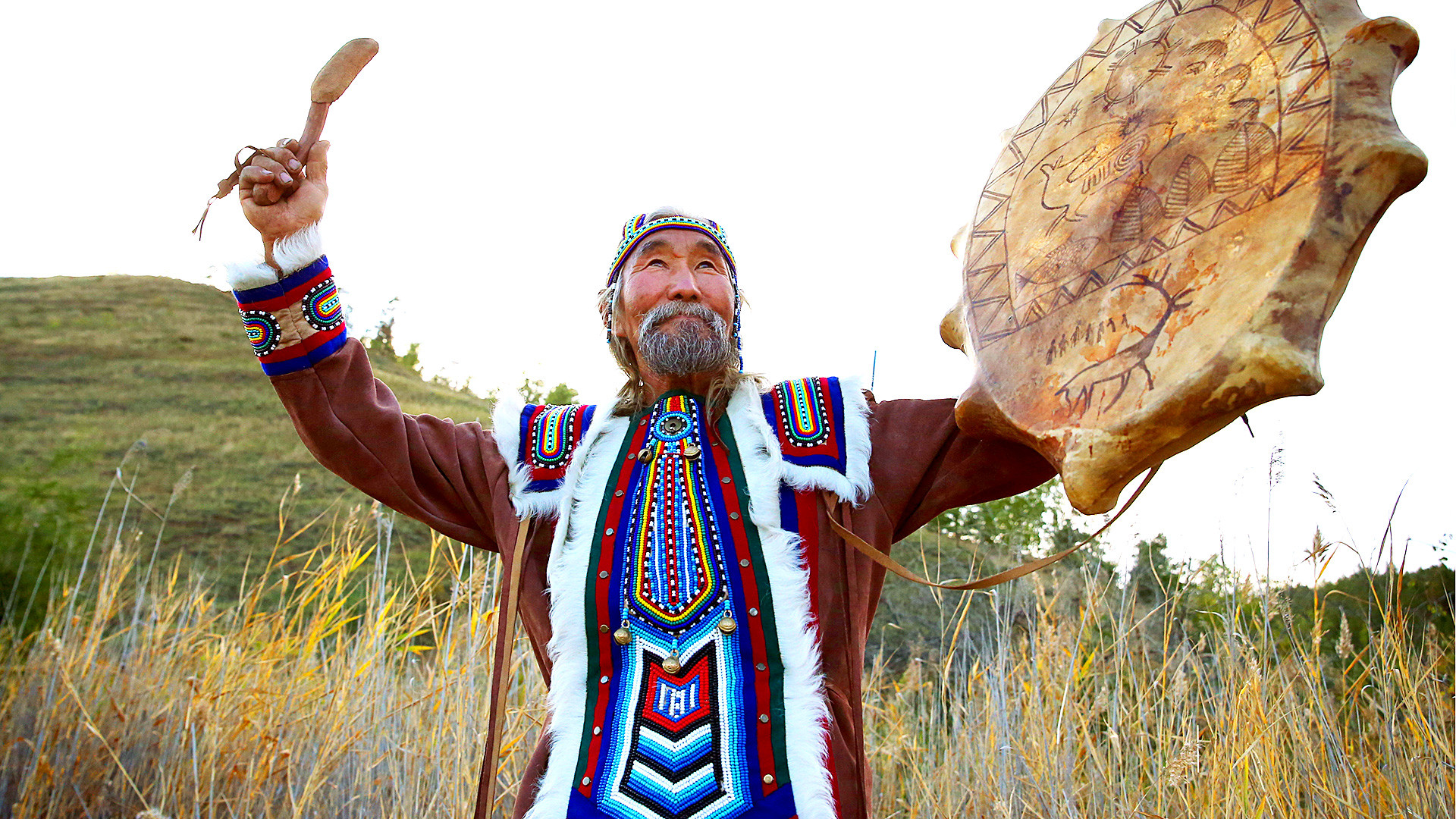
Vasily Atlasov in a Yakut national costume with an ethnic shaman drum in Us-Kut, homestead of Atlasov family.
Valery Sharifulin/TASSIn the capital of Russia's largest region buildings stand "on stilts" because of the permafrost and residents do not switch their car engines off all winter due to the cold. This is Yakutsk. In winter, you can experience real Yakutian frosts, while in summer, fully appreciate the beauty of Yakutian nature.
Yakutsk is one of Russia's oldest cities. It is believed to have been founded in 1632, when a Cossack detachment led by Pyotr Beketov founded the Yakutsk Fortress on the left bank of the River Lena. However, some historians believe that a settled community had appeared here much earlier.
Until recently, Yakutsk could only be reached by air. There are direct flights all year round from Moscow, Novosibirsk and St. Petersburg. They are reasonably efficient (a flight from Moscow takes six hours) and convenient but, alas, rather expensive. From August 2019, however, there is now the option of getting to Yakutsk by train, but this journey will take six days, not six hours!
If you happen to be in Yakutsk in the summer, definitely:

Yakutsk is a compact city, and you can get to know its center in two or three hours. The main street - Prospekt Lenina - links three squares: Friendship, Lenin and Ordzhonikidze. The area can be described as the historical center, although the oldest buildings here were built relatively recently - in the 1940s50s.
Not far from Lenin Square is the Old City historical and architectural complex, which contains samples of wooden architecture typical of Yakutsk in the 17th-18th centuries. Despite its name, all the buildings in the Old City are newly built. However, they were reconstructed in accordance with the designs of the original buildings, none of which survive today. The last original monument - the eastern gate tower of Yakutsk Fortress, a symbol of the city - burned down in 2002. In the same year, in time for the celebration of the 370th anniversary of Yakutsk, it was rebuilt according to surviving drawings.
If you are interested in the history of the city and the culture of the Yakut ethnic groups, we would advise you to visit the Yakutsk State Museum of the History and Culture of the People of the North named after Yemelyan Yaroslavsky, which is located a few blocks from the Old City.
In the heart of the Old City is the Kruzhalo shopping mall, where you will find Yakutia's best jewelry brands, offering a wide choice of ornaments made of gold and silver and set with Yakut diamonds, of course. You can also buy souvenirs here: Yakut knives, the traditional musical instrument, the khomus, and much more. In the past, there used to be a market on the site of Kruzhalo, which led directly to the quayside.
Across the road is Moskovskaya Embankment, in the center of which stands a monument to the founder of the city - Russian Cossack, Pyotr Beketov. It overlooks the Green Meadow and the city canal. It has water in it only during flooding from melting snow in the spring, and after the floating ice passes and the water level in the River Lena returns to normal, the water recedes.
On the way to the Old City, in the building of the Committee for Precious Metals and Gem-Stones of the Republic of Sakha (Yakutia), you will find something akin to the Diamond Fund in the Kremlin. It is the Treasury of the Republic of Sakha (Yakutia). The museum displays the best examples of Yakut jewelers’s work, as well as gold nuggets, gem-stones and diamonds found in Yakutia. It also has copies of famous historic diamonds and the biggest Yakutian diamonds that are currently stored in the Diamond Fund in Moscow.
There are daily tours every hour, except on Saturdays and Sundays. The cost of a 45-minute tour for an adult is around $4 (250 rubles). Unfortunately, the museum does not provide English-language tour guides, so if you are not sure of your Russian, you'd better come with someone who can interpret for you!
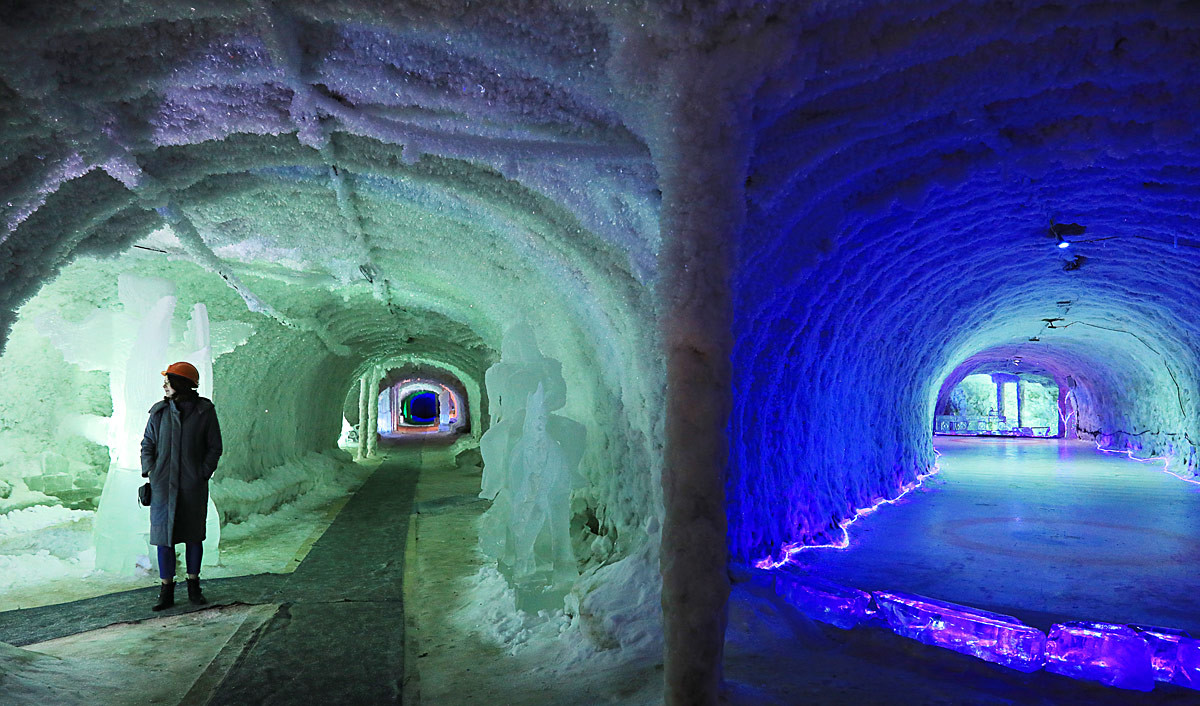
A visitor at the Kingdom of Permafrost tourist complex.
Alexander Ryumin/TASSAnother museum that is a must-visit place is the Kingdom of Permafrost, in which winter reigns all year round. It is set up in an old mining tunnel at the foot of the Chochur-Muran hill, one of the highest in the environs of Yakutsk. Prior to becoming a museum, the tunnel served as a huge natural refrigerated storage depot, where meat, fish and other foods were kept in wholesale quantities.
The amazing properties of permafrost make the place cold in summer and relatively mild in winter. Unlike the outside temperature, which can reach +40 C in summer and -40 C in winter, it is a relatively constant -6 C inside the tunnel. Before you enter the zone of eternal cold, you will be asked to put on a special thermal suit, warm footwear and socks - regardless, when you visit, definitely take warm clothes with you, even if you arrive in the height of the summer heat.
You will be able to visit the throne room of Chys Khan, the lord of the cold, and the residence that Father Frost has made his home from home, admire enormous snowflakes and ice sculptures, try ice cream and soft drinks served in ice glasses in the Ice Bar and ride the ice slide. Everyone who does this receives a snowflake, which at the end of the tour can be exchanged for a certificate of attendance at the Kingdom of Permafrost.
It even has its own paleontological mini-museum where you can see the most famous mammoth finds, in particular the head of the Yukagir Mammoth, discovered in Yakutia's Ust-Yansky District. The museum is open daily from 11:00 to 20:00. The ticket price is around $8 (500 rubles) for adults. There are concessions for children, schoolkids and students.
If you have the time and inclination, you can climb to one of the viewing platforms nearby. From the top of Chochur-Muran hill, you can take in the view through a binoscope. It takes about 20 minutes to get to the top by foot.
There is another platform on a neighbouring hill, in the grounds of the Yakutsk GRES-2 power plant. It is better to get there by car - keep that in mind when planning an excursion. Entry to both places is free of charge.
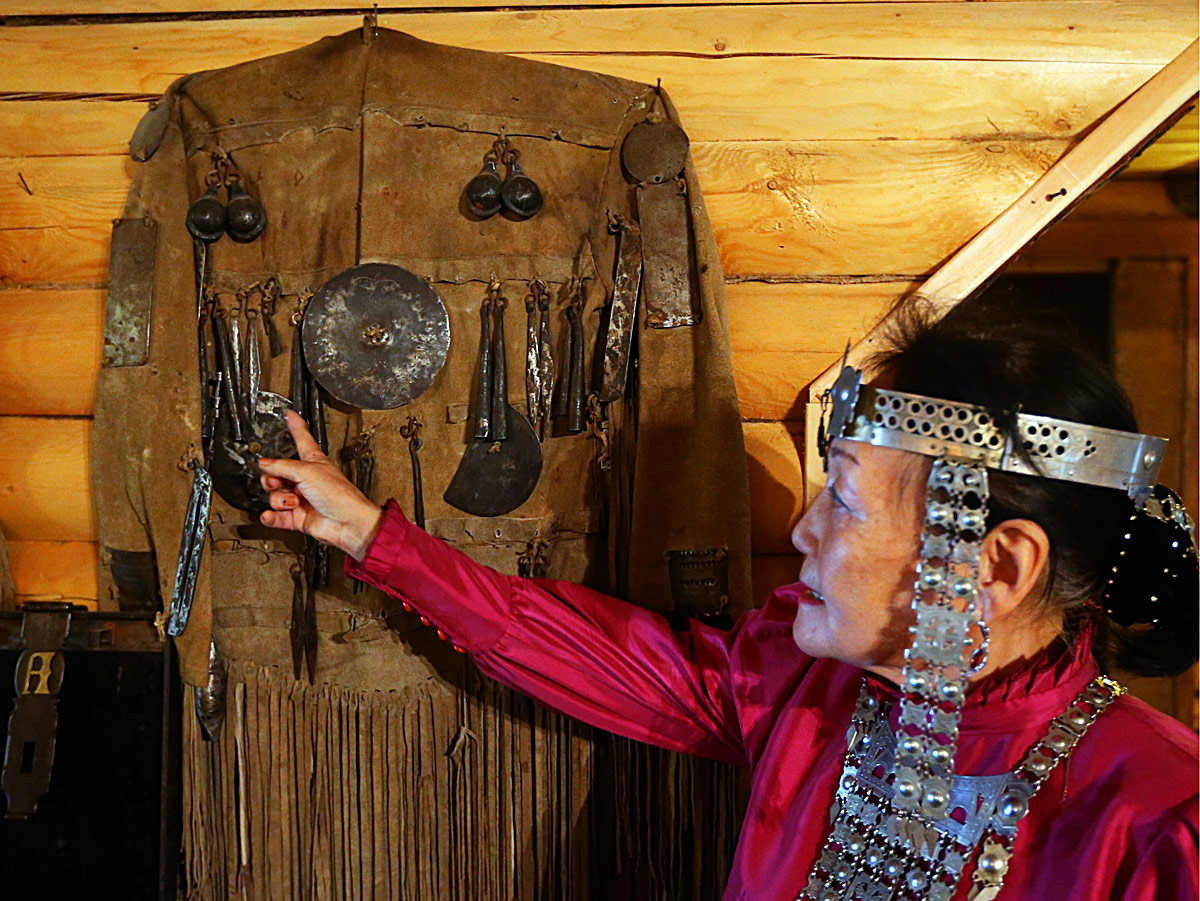
Valentina Atlasova in a Yakut national costume showing a restored shaman costume in Us-Kut, homestead of Atlasov family.
Valery Sharifulin/TASSTwo ethnographic complexes are located within walking distance of the Kingdom of Permafrost: Chochur-Muran and the Atlasov Estate. Both have restaurants where you can sampleYakut cuisine.
Chochur-Muran will be of interest to those who are fond of hunting, travel and nature. Entry into the complex is free, but a guided tour has to be arranged in advance. It costs around $4 (250 rubles) per person, takes between an hour and a half and two hours and, if necessary, can be conducted in English.
The restaurant is open daily, and you can have lunch or dinner without booking, but due to this it may be busy. Therefore, it is better to arrange a visit in advance - you will find the contact numbers and menu on thecomplex’s website. The average bill per person is around $23.50 (1,500 rubles) for lunch and around $31 (2,000 rubles) for dinner.
If you are interested in the traditional Yakut way of life and customs - visit the Atlasov Estate. Entry is also free, but a guided tour, or lunch or dinner, need to be booked in advance. An important note: Excursions here are conducted only in Russian, so if you don't speak Russian, you'd better bring someone who can interpret for you. A 40-minute tour, including traditional Yakut ceremonies, will cost you around $4 (250 rubles), and the average bill per person in the restaurant is around $23.50 (1,500 rubles). You can find the contact numbers on the complex’s website.
The local dishes are something without which your impression of Yukutia would be incomplete. Definitely try the local fish and the foal (horse) meat known as zherebyatina. The most popular fish dish - stroganina - is made of thin shavings of frozen fish. A restaurant version - Indigirka salad - is made of frozen cubed fish seasoned with salt, pepper, onion and vegetable oil. Stroganina is also made from zherebyatina, but in this case, the shavings are of meat or liver.
For those who find raw fish or meat dishes too exotic, the city’s restaurants offer a more conventional menu based on traditional foods. Definitely try salamat (a flour-based porridge with butter), seasoned boiled meat, fried crucian carp, khaan blood sausage and for dessert, kerchekh - whipped cream with berries.
In Yakutsk, many restaurants include national dishes on their menu, both in classical or modern interpretations. Look for Tygyn Darkhan, Makhtal and Reka Ozero Les, that are all within walking distance from the center and the Old City and traditionally specialize in Yakutian cuisine.
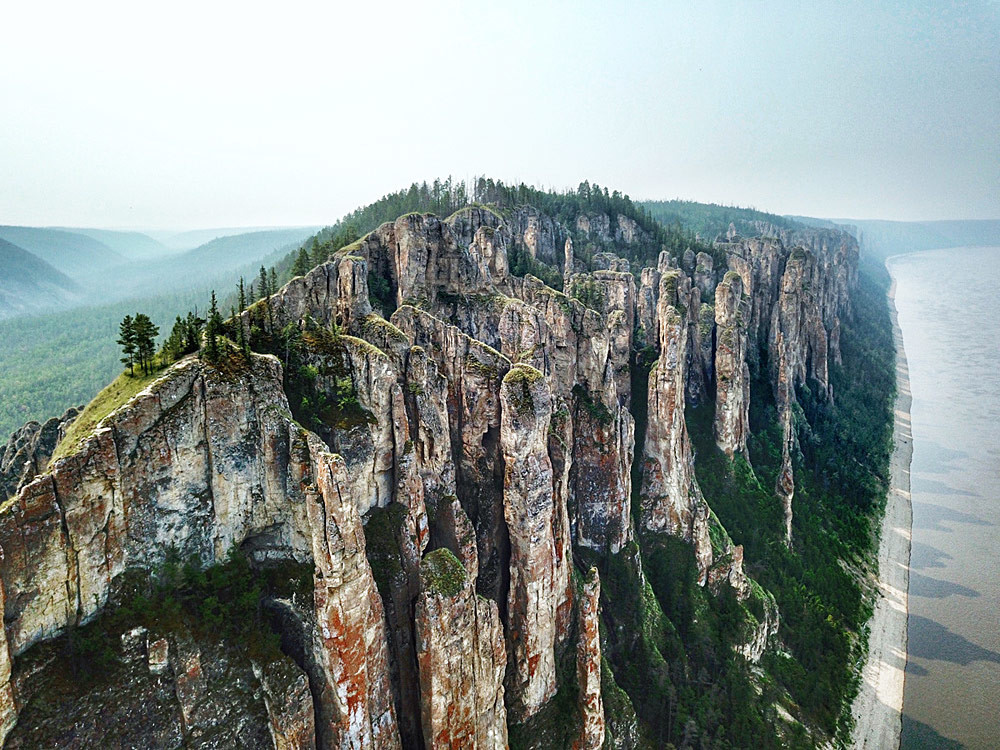
Strictly speaking, the Lena Pillars are situated not on the territory of Yakutsk, but in the neighboring Khangalassky District. But it is quite easy to get there from the capital, so if you have a spare day, don't miss the chance to visit them.
The Lena Pillars are a monument of nature included in the Unesco Intangible Cultural Heritage List. These majestic rocks formed over 400,000 years ago as a result of weathering.
The summer season starts in the last ten days of May and ends in mid-September. During this time, you can reach the Lena Pillars only by water. Watercraft and motor boats leave from a pier in the Bulgunnyakhtakh settlement, about 114 km from Yakutsk.
In 2018, the Lena Pillars nature reserve was granted National Park status, so it is better to go there with a tourist voucher, which you can get at the park's administrative office. You will find all the contact numbers on the official website.
A one-day voucher (essentially it’s just a permit to enter the park premises, without which you may be fined by a security inspector) will cost around $4.60 (300 rubles) per person and, on request, they can provide an English-speaking guide.
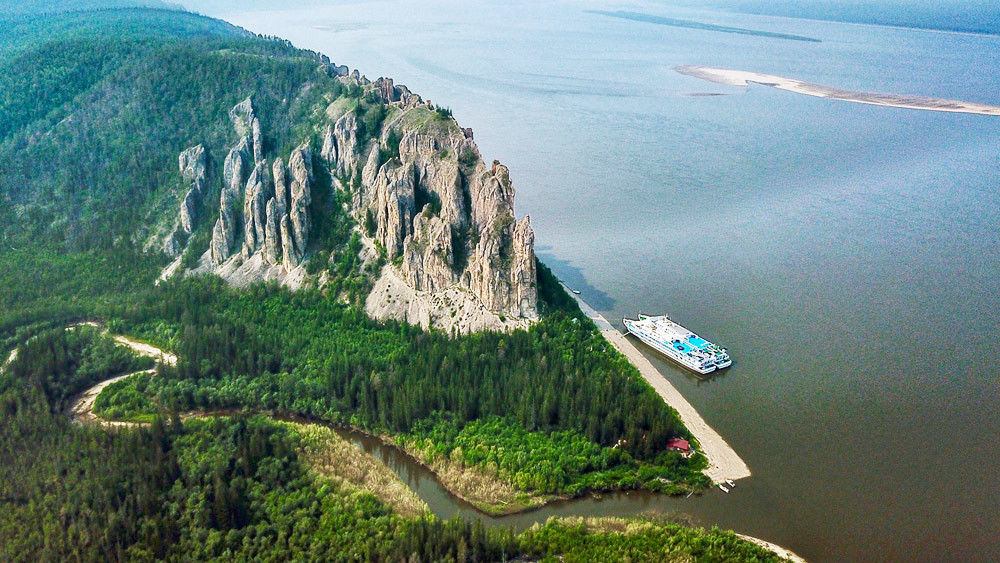
If you decide to go there in one day, the administrative office will help you organize the transfer from Yakutsk to Bulgunnyakhtakh and from there to the Lena PIllars. The price can range from around $77 (5,000 rubles) to $154 (10,000 rubles) per person, depending on the cost of transport.
The Visit Yakutia tour operator also offers one-day trips to the Lena PIllars. The route can be either by water (on motor boats from Rechnoy Port, the river port in Yakutsk) or combined (by car to Bulgunnyakhtakh and from there by river). The first option will cost you around $154 (10,000 rubles) but on the condition that there is a group of 10-15 people, otherwise there is a risk of the trip being cancelled (you will get your money back). The second option is more reliable: You can go in a group or individually. For a group of four people the trip will cost around $100-$125 (6,500-8,000 rubles) per person, and an individual trip around $435-466 (28,000-30,000 rubles).
If you have at least two days at your disposal, you can book a cruise on a ship from Yakutsk's Rechnoy (River) Station. For example, Lenaturflot offers 36- and 48-hour cruises on its comfortable Demyan Bedny and Mikhail Svetlov passenger boats. The cost of a 36-hour trip varies from around $100 (6,500 rubles) per place in a four-berth cabin to $544 (35,000 rubles) for a deluxe room. The price includes visiting the park and going up to a viewing platform, relaxing on a sandy island, insurance and an entertainment program on board the ship. You will have to pay for meals separately and can choose from several options. On average, the price per adult will range between around $39 and $47 (2,500-3,500 rubles). Cruises are operated from mid-May to mid-September, and during the low season (the end of May and from the second half of August to the first half of September) they cost about 30 percent less.
All the aforementioned prices are seasonal and are subject to change every year.
The journey from Bulgunnyakhtakh to the area of Labydia, where you can disembark and climb to the viewing platform, takes about two hours. The climb is not easy and takes about an hour and a half to two hours, depending on how fit you are.
On the way to the Lena Pillars, ask your guide or driver to stop by the tulukans, as the Yakut sand dunes are called. These are huge sandy hills that appear unexpectedly in the middle of the Yakut taiga. There is still no single plausible explanation of their origin. According to the most popular version, the tulukans are the remnants of an ancient desert which existed here about 20,000 years ago during the Pleistocene geological period when the western part of the Verkhoyansk Ridge was subjected to glaciation. There are tukulans not only on the banks of the River Lena; one of the largest sand hills is located here - the Kysyl Elesin tulukan.
Another place to visit in the summer is the Buluus Glacier. It is called a miracle of nature because even on the hottest days it is covered by a mass of ice and snow. An enormous layer of ice forms during the winter from the ice-free underground sources of Lake Buluus. Over the summer, the glacier decreases slightly but it has not melted completely for many years. In summer, when the ice begins to melt, ice caves and tunnels are formed inside, in which an adult can stand upright in.
To get to the glacier, you will have to cross to the other bank of the Lena River and then, for about 100 km, follow the Lena federal highway to the Buluus tourist camp. Buses do not go there and the only option is to hire a car (you can find offers here or via the 2GIS App) or book a car tour. The car hire in Yakutsk will cost around $39-$70 (2,500-4,500 rubles) a day, depending on the type of car; you can also hire a car with a driver.
The Visit Yakutia company offers one-day tours to Buluus. The cost of a trip depends on the number of tourists: For a group of five it will amount to around $70 (4,500 rubles) and an individual tour will cost around $280 (18,000 rubles). The cost of the tour includes the car hire with a driver-cum-guide and the ferry crossing of the Lena. Entrance tickets and meals are not included in the price. You will have to pay an entrance fee at the Buluus tourist complex, which is about $3.10 (200 rubles) per person. The journey will take all day, so you'd better bring a packed lunch or a sandwich.
Before you reach Buluus, there is another place popular with visitors in summer - the Kyuryulyur Waterfalls. The name "waterfalls" is only an approximate description - in actual fact, it is a small forest river, the Menda, along the banks of which beautiful stone terraces have formed. You will have to pay for entry - about $3.10 (200 rubles) per person but, unlike Buluus, there is no infrastructure here.
The place itself is very picturesque, but it is not easy to take beautiful photographs here in summer - it’s very popular with the Yakuts and on hot days is packed with people.
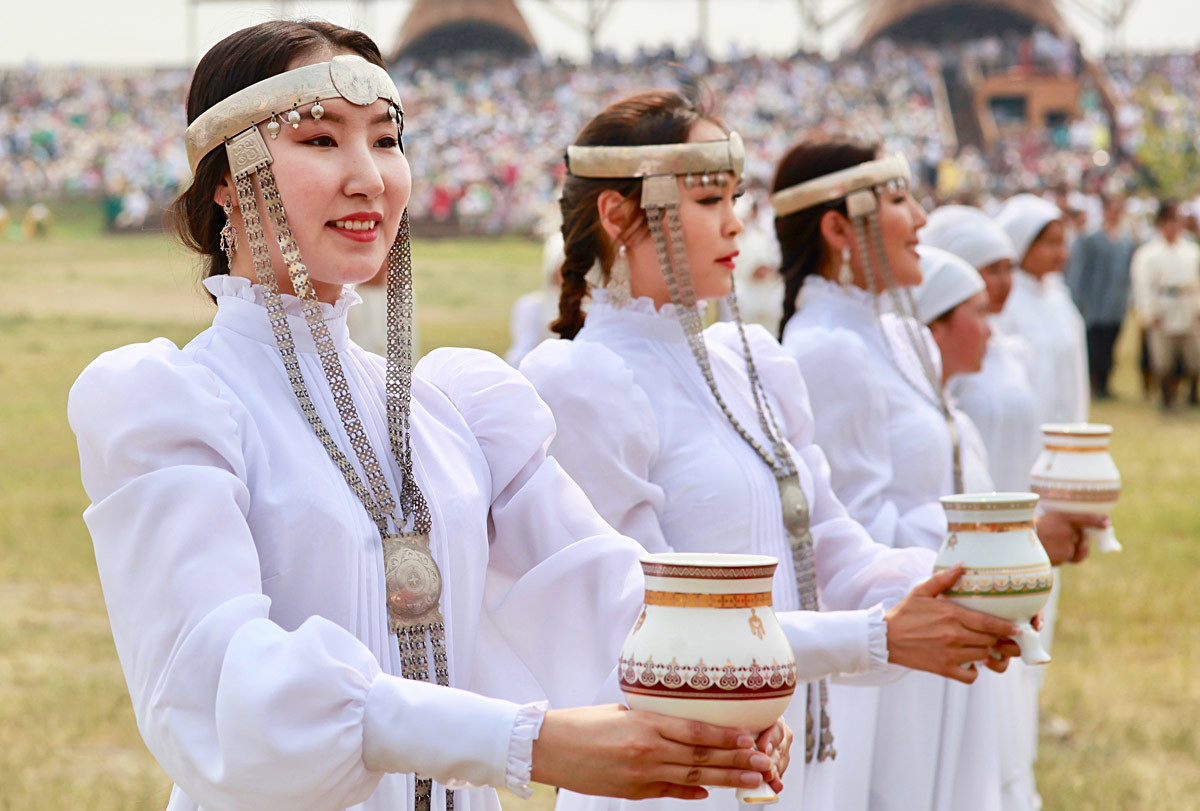
People in ethnic costumes take part in celebrations of the traditional Yakut New Year festival Ysyakh Tuimaady at the Us Khatyn ethnographic park.
Svetlana Pavlova/TASSYhyаkh is Yakutia's main national holiday, the Yakut New Year. Many tourists come specially to Yakutia for it. The official Yhyаkh day is June 21, the summer solstice, when people in Yakutia get the day off. But, in fact, Yhyаkh is celebrated throughout the whole of June - local festivals take place in every district, town and village.
The largest is Yhyаkh Tuymaada, which is held annually in the area of Us Khatyn, not far from Yakutsk, on the last weekend of June. The official opening takes place on the first day, after which sporting competitions begin. The most spectacular and prestigious are the horse races for the leader of the republic’s and head of the city’s prizes.
The Dygyn Games, a tournament in which the republic's best athletes compete in national sports, also takes place at the same time. The culmination of the festival is the ritual greeting of the sun, in which people are ‘charged’ with energy for a whole year. On the second day, the competition winners are announced and the official closing ceremony takes place. Entrance to Us Khatyn during the festival is free and all events, apart from the horse racing, are free. For the duration of the whole festival special buses run from Yakutsk to the Yhyаkh Tuymaada venue. A bus journey will cost you about $0.60 (40 rubles). You can use a taxi, but it will be more expensive - around $6-$16 (400-1,000 rubles).
If using any of Russia Beyond's content, partly or in full, always provide an active hyperlink to the original material.
Subscribe
to our newsletter!
Get the week's best stories straight to your inbox